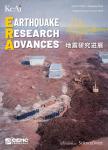Under the surface:Pressure-induced planetary-scale waves,volcanic lightning,and gaseous clouds caused by the submarine eruption of Hunga Tonga-Hunga Ha'apai volcano
Under the surface: Pressure-induced planetary-scale waves, volcanic lightning, and gaseous clouds caused by the submarine eruption of Hunga Tonga-Hunga Ha’apai volcano作者机构:Columbia UniversityDept.of Applied Physics and Applied MathematicsNew YorkNY10027USA Ocean University of ChinaSchool of Computer Science and Marine GeosciencesQingdao266100China University of CaliforniaSanta BarbaraDept.of Earth Science1006 Webb HallUniversity of CaliforniaSanta BarbaraCA93106USA University of HoustonDept.of Earth and Atmospheric SciencesScience&Research Bldg.13507 Cullen Boulevard#312HoustonTX77004USA University of South FloridaSchool of GeosciencesTampaFLUSA Mission BeachCAUSA Michigan State UniversityDept.of Earth and Environmental Sciences288 Farm Ln BldgRoom 207East LansingMI48824USA Georgia Institute of TechnologySchool of Atmospheric and Earth SciencesNorth AvenueAtlantaGA30332USA University of Southern CaliforniaSonny Astani Dept.of Civil&Environmental EngineeringKaprielian HallLos AngelesCA90089-2531USA University of BolognaDept.of Geological SciencesVia Zamboni3340126BolognaItaly Hokkaido UniversityDivision of Earth System ScienceN10W5SapporoHokkaido060-0810Japan
出 版 物:《Earthquake Research Advances》 (地震研究进展(英文))
年 卷 期:2022年第2卷第3期
页 面:1-13页
核心收录:
学科分类:070801[理学-固体地球物理学] 07[理学] 0708[理学-地球物理学]
基 金:partially supported by US Department of Energy Grant DE-SC0019759 National Science Foundation (NSF) Grants EAR-1918126, EAR-2027150, EAR-1925965, and OCE-1842989
主 题:Hunga Tonga-Hunga Ha'apai Atmospheric pressure wave Tsunami wave Volcanic lightning Phreatoplinian eruption
摘 要:We present a narrative of the eruptive events culminating in the cataclysmic January 15, 2022 eruption of Hunga Tonga-Hunga Ha’apai Volcano by synthesizing diverse preliminary seismic, volcanological, sound wave, and lightning data available within the first few weeks after the eruption occurred. The first hour of eruptive activity produced fast-propagating tsunami waves, long-period seismic waves, loud audible sound waves, infrasonic waves, exceptionally intense volcanic lightning and an unsteady volcanic plume that transiently reached-at 58km-the Earth’s mesosphere. Energetic seismic signals were recorded worldwide and the globally stacked seismogram showed episodic seismic events within the most intense periods of phreatoplinian activity, and they correlated well with the infrasound pressure waveform recorded in Fiji. Gravity wave signals were strong enough to be observed over the entire planet in just the first few hours, with some circling the Earth multiple times subsequently. These large-amplitude, long-wavelength atmospheric disturbances come from the Earth’s atmosphere being forced by the magmatic mixture of tephra, melt and gasses emitted by the unsteady but quasicontinuous eruption from 0402±1–1800 UTC on January 15, 2022. Atmospheric forcing lasted much longer than rupturing from large earthquakes recorded on modern instruments, producing a type of shock wave that originated from the interaction between compressed air and ambient(wavy) sea surface. This scenario differs from conventional ideas of earthquake slip, landslides, or caldera collapse-generated tsunami waves because of the enormous(~1000x) volumetric change due to the supercritical nature of volatiles associated with the hot,volatile-rich phreatoplinian plume. The time series of plume altitude can be translated to volumetric discharge and mass flow rate. For an eruption duration of ~12 h, the eruptive volume and mass are estimated at 1.9 km^(3) and~2 900 Tg, respectively, corresponding to a VEI



